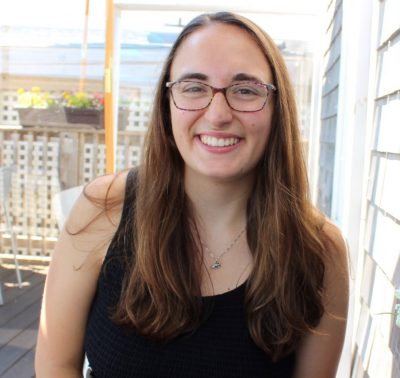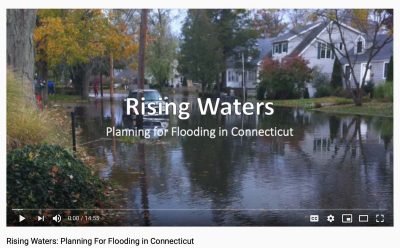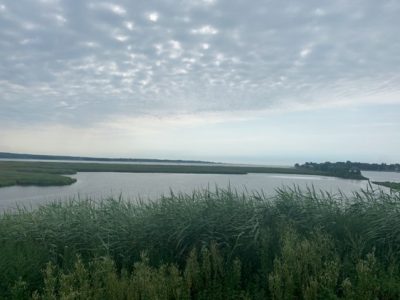
Editor’s note: Since 2017, 60 students have taken the one-semester UConn Climate Corps class, with 39 electing to do a second semester independent study, working on 18 different projects. This year, 24 students are enrolled — the maximum number permitted.
The first semester of the Climate Corps engages students in understanding the local impacts of climate change here in Connecticut, how local government works and potential solutions to climate impacts.
The second semester independent study engages students in applying their knowledge in assisting municipalities in adapting to climate change and its impacts with local partners. The course is taught by Juliana Barrett, CT Sea Grant extension educator and coastal habitat specialist, and Bruce Hyde, land use academy director at UConn CLEAR (Center for Land Use Education and Research).
In this blog, UConn senior Sarah Schechter shares her experiences in the class and two summer internships that grew out of it. All photos provided by Schechter.
In the fall of my sophomore year at UConn, I enrolled in EVST 3100 – “Climate Resilience and Adaptation: Municipal Policy and Planning.” This is a course about climate change that allows students to look at real-world problems and learn how to solve them in a classroom setting. This course was followed by an independent study for the Climate Corps in the spring.
After developing this background and experience with climate change, I was hired for a summer internship with UConn Extension and Connecticut Sea Grant. During the summer of 2019, I worked with Juliana Barrett on a video titled, “Rising Waters: Planning for Flooding in Connecticut.”
This video explains coastal and inland flooding and the impacts of climate change. Municipal officials and commission members viewing the video can use this information in planning for flooding in their communities. I traveled to sites on and around the Connecticut River as well as locations on the coast of Connecticut, and I visited historical societies in order to create a photobank of past floods as well as vulnerable areas and adaptations that are being made. This project allowed me to apply what I had learned about sea level rise and flooding through the Climate Corps, as well as expand my knowledge on the subject, which I will apply to future projects.

During the summer of 2020, I have been working with Juliana Barrett again, this time to complete a video about climate change, which will also be shown to municipal officials so that they can better convey the subject to their citizens.
This summer internship was funded by The Rockfall Foundation and CT Sea Grant. The video explains the science behind climate change. It discusses ways to adapt and mitigate issues associated with climate change. I have enjoyed working on this project as it has allowed me to learn more about how the climate emergency is impacting Connecticut, and I am excited to share this information with town officials and citizens within my home state.
Throughout this internship, I also visited some sites along the Connecticut River, this time to take pictures of salt marshes, which are valuable, but fragile, ecosystems. The final product of this project is titled “Climate Change in Connecticut.”

As the summer of 2020 comes to a close, I have been contemplating what I can do next. I plan to utilize at least one of the videos I created throughout my internships as I write my honors thesis, which I will complete during the coming spring semester.
My goal is to attend various town meetings and show one or both of the videos I created. I will survey the officials before and after viewing the videos, to gauge how understandable and useful the material is, and to find out how city officials plan to respond to climate change and sea level rise. I look forward to working on this project and continuing to expand my knowledge on the subject, while also educating others on the effects of climate change.